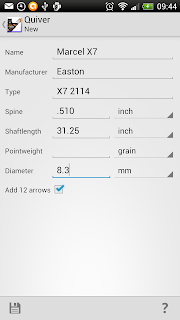Shoot what you like
There is most certainly value in getting sound advice and information about specific pieces of equipment but ultimately an archer who uses gear that they like and have confidence in will generally shoot better than one who just buys what is popular for the sake of staying with the pack (within reason). We can never forget the critical mental aspect of our sport and lacking confidence in or outright despising a piece of equipment will hobble us just as fast as a form flaw.
For example, when I started shooting compound competitively it was drilled into my head over and over again that the most stable shooting platform was a long ATA bow. Which granted this is true but for one reason or another I eventually settled on a relatively short (ok I guess medium) bow, the Hoyt Alpha Elite. I tried two different models of Hoyt Vantage Elite, the Hoyt Contender and the Bowtech Sentinel but just couldn't achieve the mental comfort that I had with the Alpha. So I stuck with it, despite being told on several occasions that my bow was "short".
Now the more astute readers will note that I gave praise in a recent post to the Vantage Elite. Let me clarify, I thoroughly enjoyed both of my vantages (I shot both a 2009 vantage elite with spiralX cams and a 2012 vantage elite plus with GTX cams) but when looking at the scores and statistics they just didn't stack up.
Or alternatively, let's consider my current equipment set up. I'll admit I was originally seduced by the shiny, Hoyt proprietary, Formula system but eventually jumped to a 2005 vintage Hoyt AeroTec riser. If I was just after the Tec bridge I had newer models to choose from and if I was just after the ILF mounting system I could have gone with... well... a lot of options. But rather, I simply just like the AeroTec both in look and feel.
























.jpeg)
















